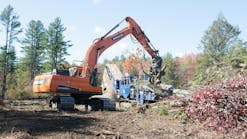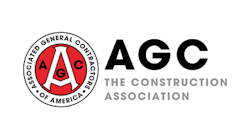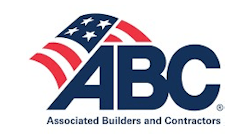“I’ve seen nine contractors get dinged, just in 2005, for exposing employees to trenching hazards, even though they were aware of the OSHA standard,” says Allen Gerhard, vice president of operations for safety consultant ATR Global Inc. of Romeoville, IL. “We helped nine contractors reduce their OSHA citations and get back on track.” (OSHA is the federal Occupational Safety & Health Administration.)
The average first-time OSHA fine, Gerhard says, is $6,000 to $7,000. But if OSHA rules that you have a repeated or willful violation, the fines are much steeper. Last June, for example, OSHA proposed fines of $100,000 for Ramos Industries of Houston, for one alleged willful, one serious, and one repeat violation. Inspectors had found employees working in an unprotected excavation while installing a concrete manhole at a Ramos site in Palmhurst, TX.
“This is the third time this company has been cited for trenching and excavation hazards in the last year, two of which occurred in December 2004 within a two-week period,” says John Giefer, OSHA’s Corpus Christi (Texas) area director. “It is fortunate that no one was injured.” Lack of sufficient trench safety results in more than 50 deaths per year in the United States.
Why is trench safety such a problem? We asked Dave Soderman, president and owner of Safety Alliance Inc., the Barrington, IL–based safety consultant for the Underground Contractors Association of Illinois. “Personally I think it is inadequate training and policing of the workforce,” Soderman says. “Management has to show that commitment to safety.”
The safety message from management needs to be a consistent one. “The first time management sees a violation, you might issue a warning, unless it’s blatant, and then you might fire the guilty person,” says Soderman. “The second time, you give them a day without pay, and the third time, you tell them to go work somewhere else. And to the guys in the field, I tell them not to tolerate unsafe conditions. No paycheck is worth dying for.” As OSHA says, don’t enter an unsafe trench.
Contractors need to read the OSHA trenching safety standard, Gerhard emphasizes. (It can be found at www.osha.gov.)The standard states that trenches of 5 feet or more in depth, unless they’re in rock, must offer protection—sloped sides, stepped sides, or shoring or a trench box—to employees working in them. “So some contractors just say, ‘We’re only working 4 feet deep; we don’t need any shoring,’” says Gerhard.
“Think again,” he adds. “The 4-foot-deep trench still has to meet certain conditions,” he stresses. If an employee is lying down in the 4-foot trench and welding pipe, for example, he must be protected from objects falling onto him in the trench. What’s more, welding fumes may travel down the trench to another employee—and that’s another hazard to protect against.
“When you excavate through loose soil, dirt that’s already been disturbed, you have to shore or shield or slope, because you need to protect employees,” says Gerhard.
OSHA says pre-job planning is vital to accident-free trenching. Safety cannot be improvised as work progresses. The following concerns must be addressed by a competent person, OSHA says. (A competent person is trained in soils analysis and the use of protective systems, knows the OSHA requirements, and has the authority to eliminate hazards.)
- Evaluate soil conditions and select the appropriate protective systems. Soil conditions are explained in OSHA regulation 1926, Subpart P, Appendix A.
- Construct protective systems in accordance with the standard.
- Preplan; contact utilities to locate underground lines; plan for traffic control if necessary; determine proximity to structures that could affect the choice of protective system.
- Test for low oxygen, hazardous fumes, and toxic gases, especially when gasoline engine–driven equipment is running or the dirt has been contaminated by leaking lines or storage tanks. Ensure adequate ventilation or respiratory protection if necessary.
- Provide safe access into and out of trenches that are 4 feet deep or more. That means a safe ladder, stairway, or ramp must be available within 25 lateral feet of workers in the trench.
- Provide appropriate protections if water accumulation is a problem.
Site safety inspections must be conducted by a competent person before construction begins, daily before each shift, as needed throughout the shift, and following rainstorms or other hazard-increasing events such as equipment approaching the edge of the trench.
Then there are the hazards of sawing concrete pipe for a trenching job. Cutting concrete can present a safety hazard if you do it dry, Soderman says. The silica dust that flies off the blade can cause silicosis and lung cancer. It’s better and easier for many reasons to cut concrete with a wet saw. Then you don’t need respirators. If you don’t have a hose on the job, use a sprayer, he says.
If you choose to cut concrete dry, then you have to measure the dust levels in the air to determine if employees need respirators. And any employee who is going to wear a respirator must first undergo a medical exam, by a doctor, for any respiratory conditions the person already has. Then employees must be trained in how to wear respirators, how to store them, and how to clean them. “Just keeping the paperwork for the medical records is difficult,” Soderman says.
If you’re still dubious about safety, or inclined to think accidents can’t happen to you, just ask yourself this: Would you rather police your employees, or have OSHA do it for you? Or worse yet, have a serious injury or a fatality on one of your projects? Sometime you might want to try reading the news releases about trench fatalities, fines, and citations on the OSHA Web sites. It’s not a pretty sight.








